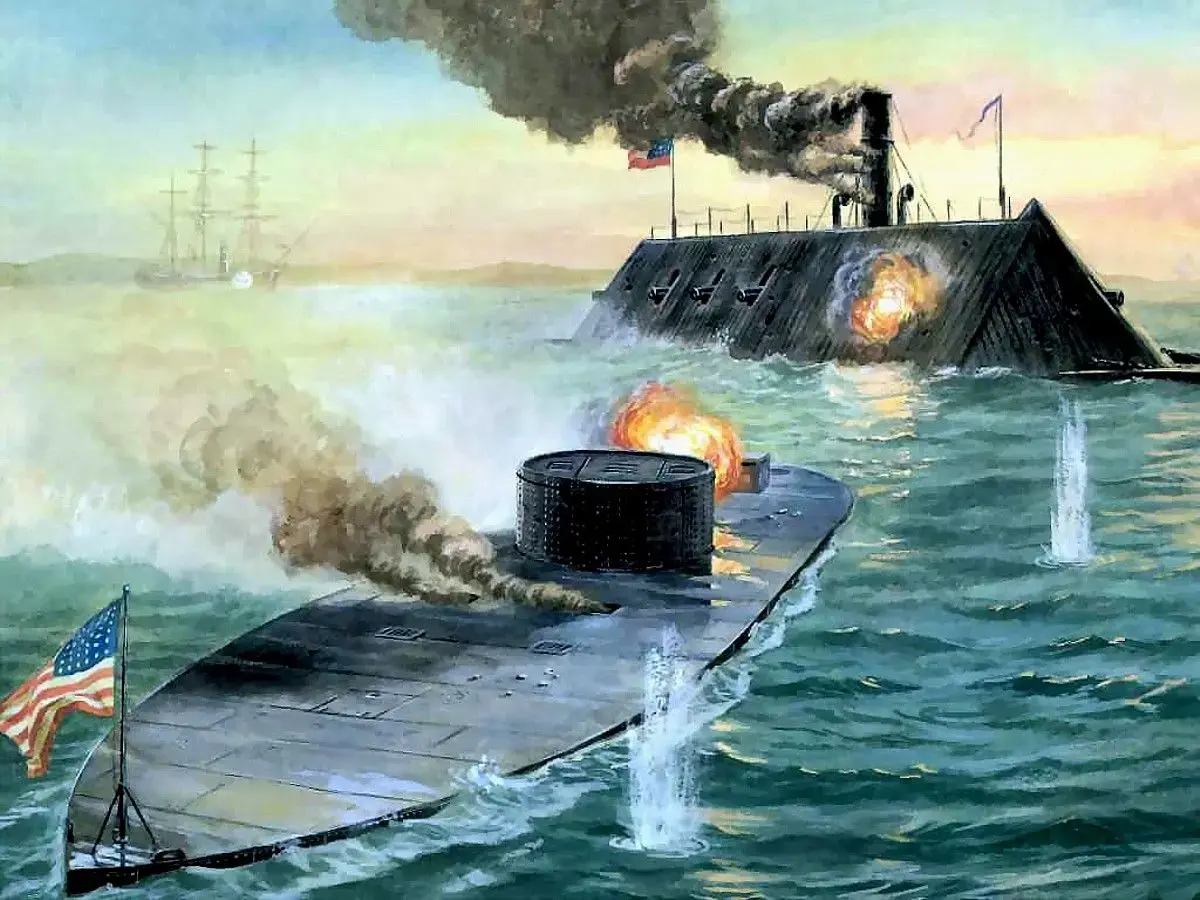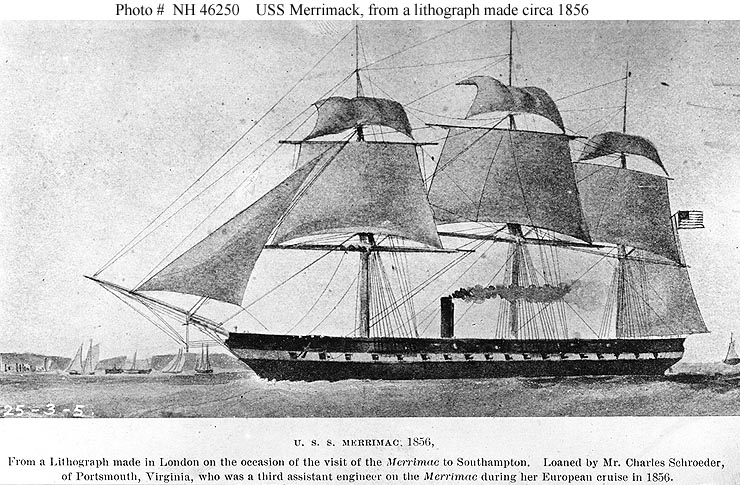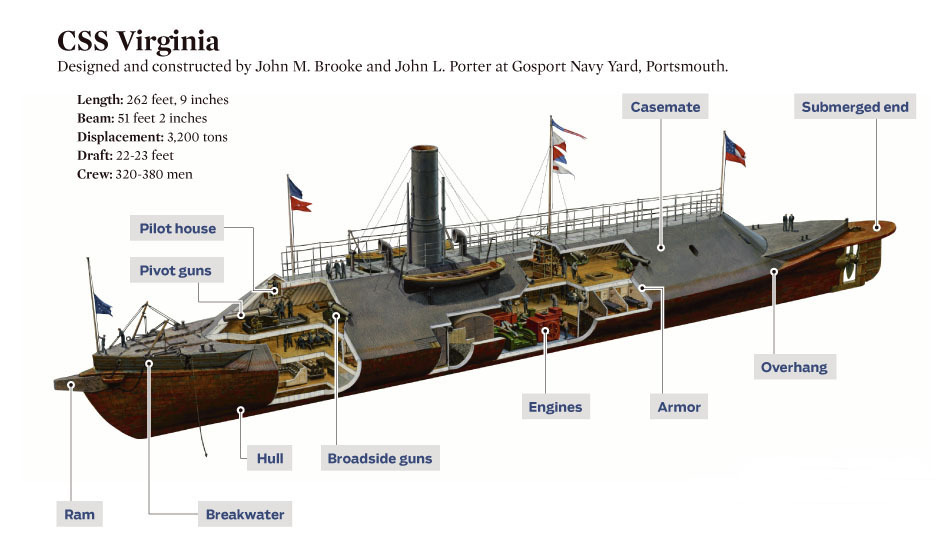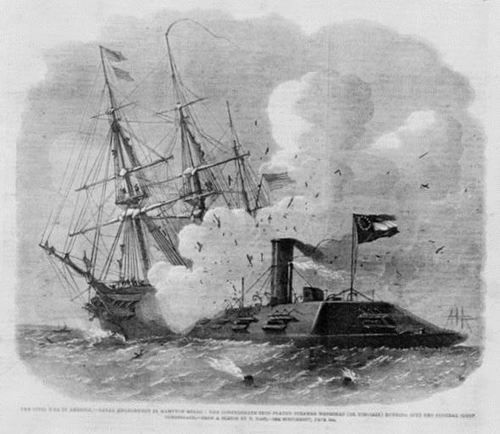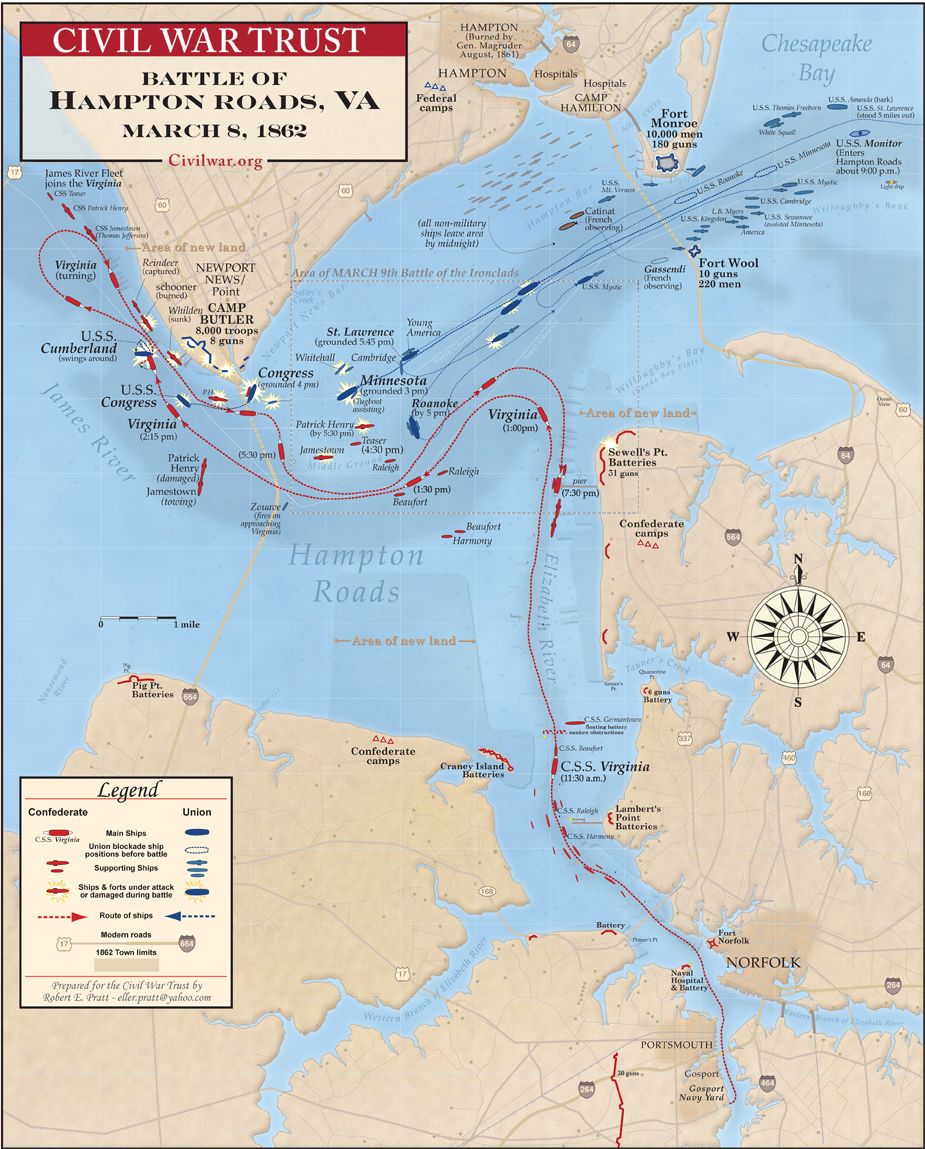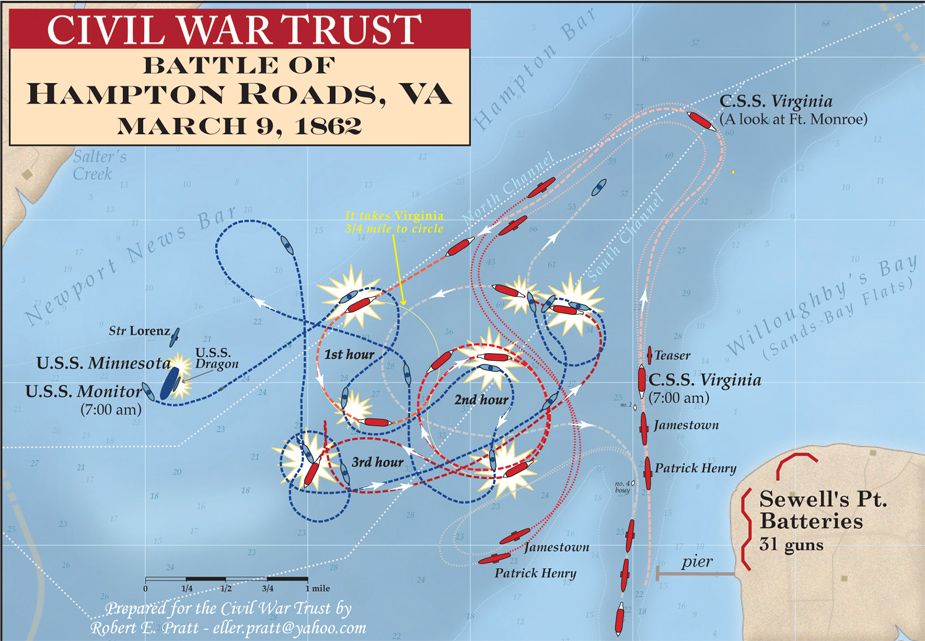- cross-posted to:
- [email protected]
- cross-posted to:
- [email protected]
cross-posted from: https://lemmy.world/post/10294182
CSS Virginia was the first, but not last, steam-powered ironclad warship built by the Confederate States Navy during the American Civil War. It was constructed from the original lower hull and engines of the scuttled steam frigate USS Merrimack. CSS Virginia famously took part in the Battle of Hampton Roads, opposing the Union’s ironclad, the USS Monitor, in March 1862. The battle is significant in naval history as the first battle between ironclads.
The origin of the CSS Virginia begins during the US military evacuation from Gosport Navy Yard in 1861. The steam frigate USS Merrimack was burned to the waterline and sunk to prevent the ship’s capture, however once Confederate forces took control of the area, they were able to raise the ship and discover that the lower hull and steam engine were intact.
Off of this foundation, the Confederacy built the CSS Virginia as an ironclad with a casemate design. A casemate design used the main deck housing the entire gun battery in fixed gunports. The ship had 14 gunports. As armament four muzzle-loading single-banded Brooke rifles, six smoothbore 9-inch Dahlgren guns, two 7-inch pivot guns,and two 6.4-inch cannons, and two 12 pound howitzers were arrayed throughout the ship in both gunports and deck mounts. In addition the CSS Virginia was fitted with with a ram. As a downside to the massive armor and armament build onto the ship, the original steam engines were put under great strain making the ship slow and unmaneuverable.
The CSS Virginia took part in the two day long Battle of Hampton Roads begining on March 8, 1862. On the first day it sank two Union ships and ran a third one aground.
One the second day, the Union ironclad, the USS Monitor, engaged it in a battle for hours, but neither ship was able to significantly damage the other. At the end of the day, both ships withdrew with neither having gained a clear victory. This was the only time they was engage in combat with each other. The Union continued to blockade Norfolk, containing the Confederate ships while not engaging them.
On May 10th Union land forces advanced and took Norfolk, blocking off the CSS Virginia’s river access. Since the ironclad was not suitable for ocean sailing, there was nowhere for it to go, and on May 11th the ship was scuttled.
The ship is known by many names. It is often referred to by its original designation as the “Merrimack” even in its Confederate ironclad form. Northern papers and Union troops during the Civil War nicknamed it “The Rebel Monster” as well. Pre-1900 historians frequently misspelled the name as "Merrimac”, and the misspelling has also become widely.


